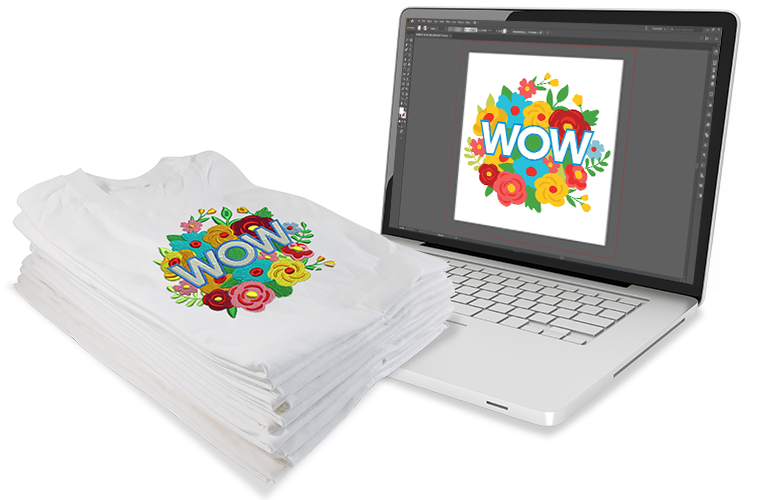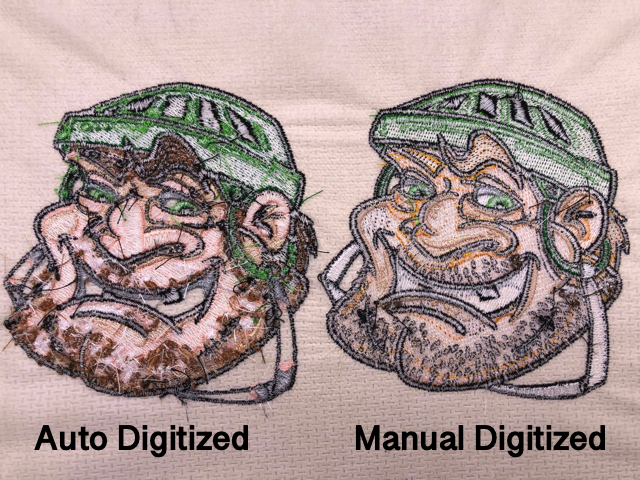Reliable Digitizing for Embroidery: Quick Turnaround
Reliable Digitizing for Embroidery: Quick Turnaround
Blog Article
Simplifying the Art of Needlework Digitizing: Step-by-Step Guide
Embroidery digitizing is a thorough craft that requires accuracy and creativity. As modern technology continues to breakthrough, the digitization process has actually ended up being more accessible, permitting lovers to bring their intricate styles to life easily. In this overview, we will decipher the intricacies of needlework digitizing, damaging down each action methodically to simplify the process and equip both novices and skilled embroiderers alike. Stay tuned to uncover just how you can streamline this intricate art form and transform your creative visions into perfectly stitched masterpieces.
Recognizing Embroidery Digitizing Software Application
Needlework digitizing software works as a vital tool for transforming detailed styles right into electronic formats suitable with embroidery machines, facilitating specific stitching and personalization. This specialized software application enables individuals to import numerous image file layouts, such as JPG or PNG, and transform them right into needlework machine-readable formats like DST, EXP, or PES - Digitizing for Embroidery. By using features like stitch editing and enhancing, padding alternatives, and string shade selection, digitizing software application makes it possible for users to regulate every aspect of the design process
In addition, progressed embroidery digitizing software offers devices for creating complicated layouts, changing stitch density, and including detailed information. Individuals can additionally preview the style prior to sewing it out, making sure accuracy and reducing mistakes. In addition, many software program programs offer automated features that assist improve the digitizing procedure, saving effort and time.
Understanding the capabilities of needlework digitizing software program is vital for accomplishing high-grade lead to embroidery tasks. By grasping this tool, embroidery lovers and professionals can release their imagination and bring elaborate designs to life with accuracy and efficiency.

Choosing the Right Layout Documents
After acquainting yourself with the capacities of needlework digitizing software, the following vital step in the process is selecting the ideal style file for your job. Digitizing for Embroidery. When picking a layout declare embroidery digitizing, it's necessary to think about the intricacy of the layout, the size of the last item, and the kind of material you will certainly be functioning with
For intricate layouts with great information, a high-resolution image or vector data is advised to ensure that the embroidery device can precisely duplicate the layout. In addition, the size of the final item plays a considerable role in selecting the ideal design documents. Bigger layouts may need higher resolution documents to preserve clearness and sharpness.
Moreover, the sort of textile you will be stitching on influences the choice of layout file. Various materials might need adjustments in the layout data to make sure that the stitches are correctly straightened and the layout site shows up as planned. By meticulously choosing the best design data based upon these elements, you can set yourself up for an effective embroidery digitizing procedure.
Digitizing Devices and Methods
Using specialized software application and accuracy methods, digitizing tools are important in transforming complex styles right into embroidery-ready data. Needlework digitizing software, such as Wilcom, Hatch, or Embrilliance, gives the required system to transform art work right into stitch data. These programs offer features like stitch editing, underlay alternatives, and lettering tools to guarantee the design equates flawlessly onto fabric.
One of the key strategies in digitizing is developing a clear path for the needlework maker to follow. This includes digitizing each component of the design with precision, determining stitch kinds, thickness, and instructions. By utilizing tools like digitizing tablets or software-specific plugins, embroiderers can achieve a high degree of accuracy in their digitized styles.
Moreover, understanding the art of underlay sewing is important for creating top quality needlework. Underlay sewing supports the material and develops a structure for the style, making sure that the last item is both aesthetically enticing and lasting. By recognizing these digitizing tools and methods, embroiderers can elevate their craft and bring elaborate styles to life with accuracy and efficiency.
Customizing Stitch Types and Directions
Having actually developed a structure in digitizing devices and strategies, an essential facet in advancing embroidery workmanship lies in tailoring stitch types and directions with precision and purpose. The option of stitch types can significantly influence the overall appearance and structure of the embroidered design. Satin stitches, understood for their smooth and glossy coating, job well for developing boundaries and text. On the other hand, fill stitches are optimal for covering larger areas efficiently. By purposefully combining these stitch kinds, embroiderers can attain look here deepness and dimension in their layouts.
Furthermore, the direction of stitches plays an important duty in enhancing the aesthetic charm of the last embroidery. Diverse stitch instructions can add appearance, highlight specific elements, and develop visual rate of interest. Transforming the angle of stitches can mimic motion or natural patterns like fur or plumes. By exploring with various stitch angles and patterns, embroiderers can bring their layouts to life with remarkable detail and details. Understanding the art of tailoring stitch kinds and directions empowers embroiderers to release their creativity and boost the top quality of their job.
Testing and Refining Your Digitized Design
To guarantee the accuracy and quality of your digitized design, detailed screening and refinement are essential actions in the embroidery digitizing process. When you have actually completed the digitization of your design, it is important to test it prior to waging the actual embroidery. Checking permits you to determine any type of potential problems such as thread breaks, stitch density troubles, or design distortions that may impact the outcome.

After screening, it is necessary to fine-tune your digitized design based upon the responses from the examination sew-out. This might involve tweaking stitch setups, adjusting thickness, or making modifications to the general layout to accomplish the desired result. By iterating through testing and refinement, you can adjust your digitized design to excellence before relocating forward with the actual needlework process.
Final Thought
To conclude, grasping the art of embroidery digitizing calls for a detailed understanding of the software program, choosing the right style documents, making use of digitizing tools and strategies, personalizing stitch types and instructions, and screening and refining the digitized layout. By adhering to these actions, embroiderers can simplify the digitizing procedure and create top quality embroidered layouts with precision and performance.
Report this page